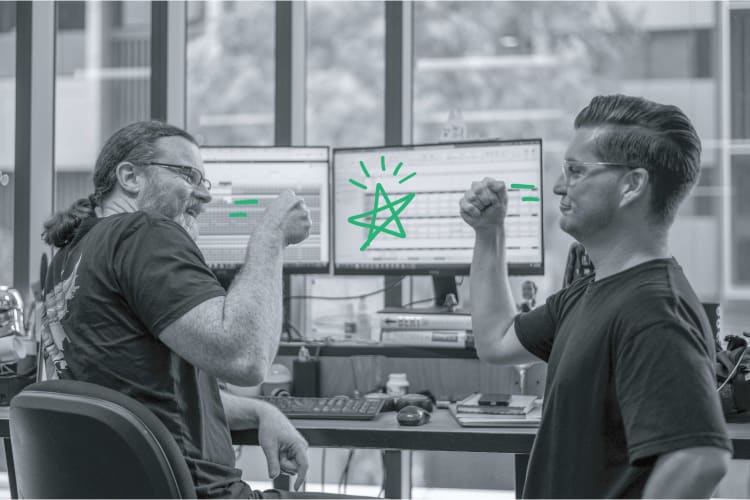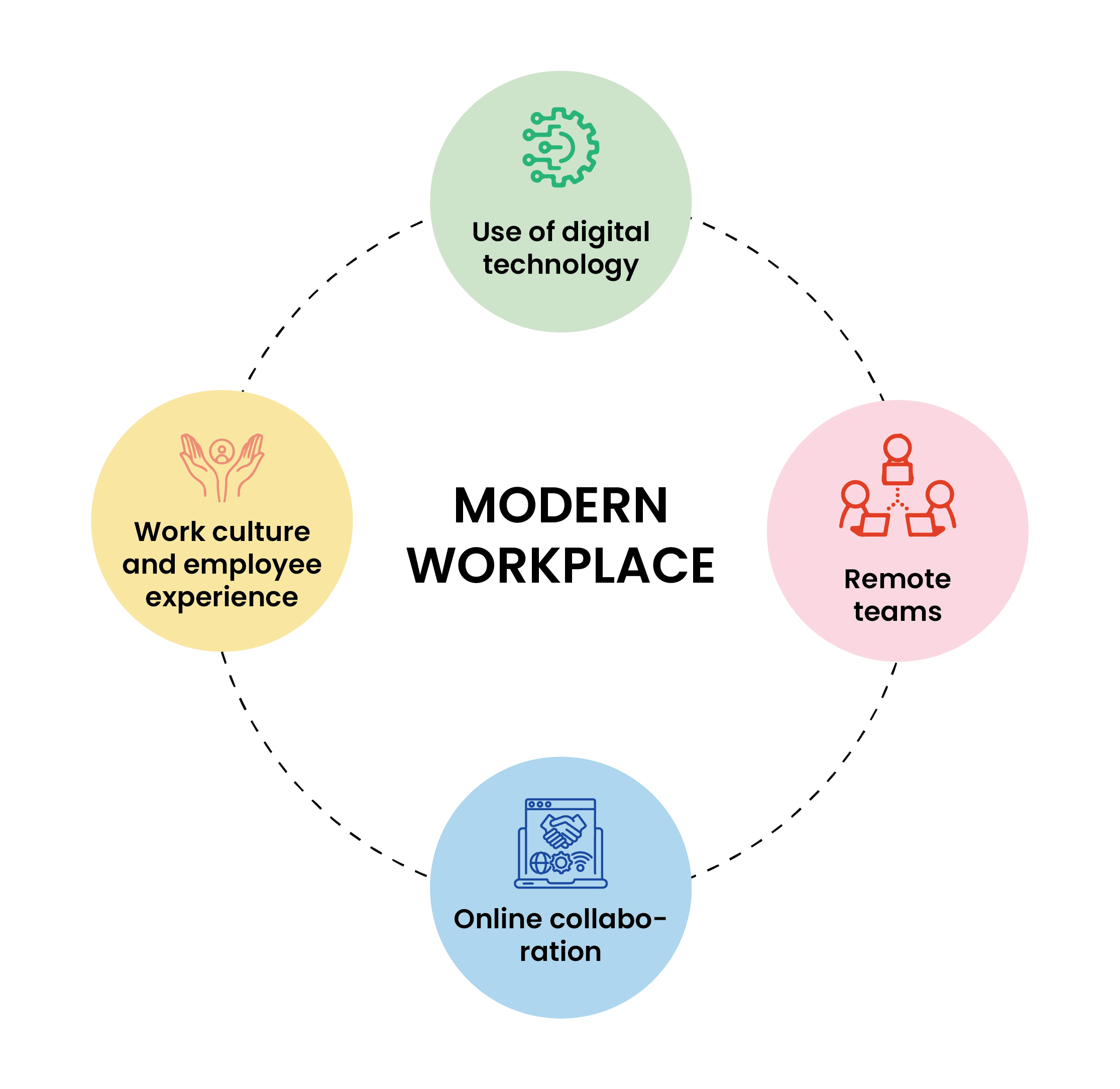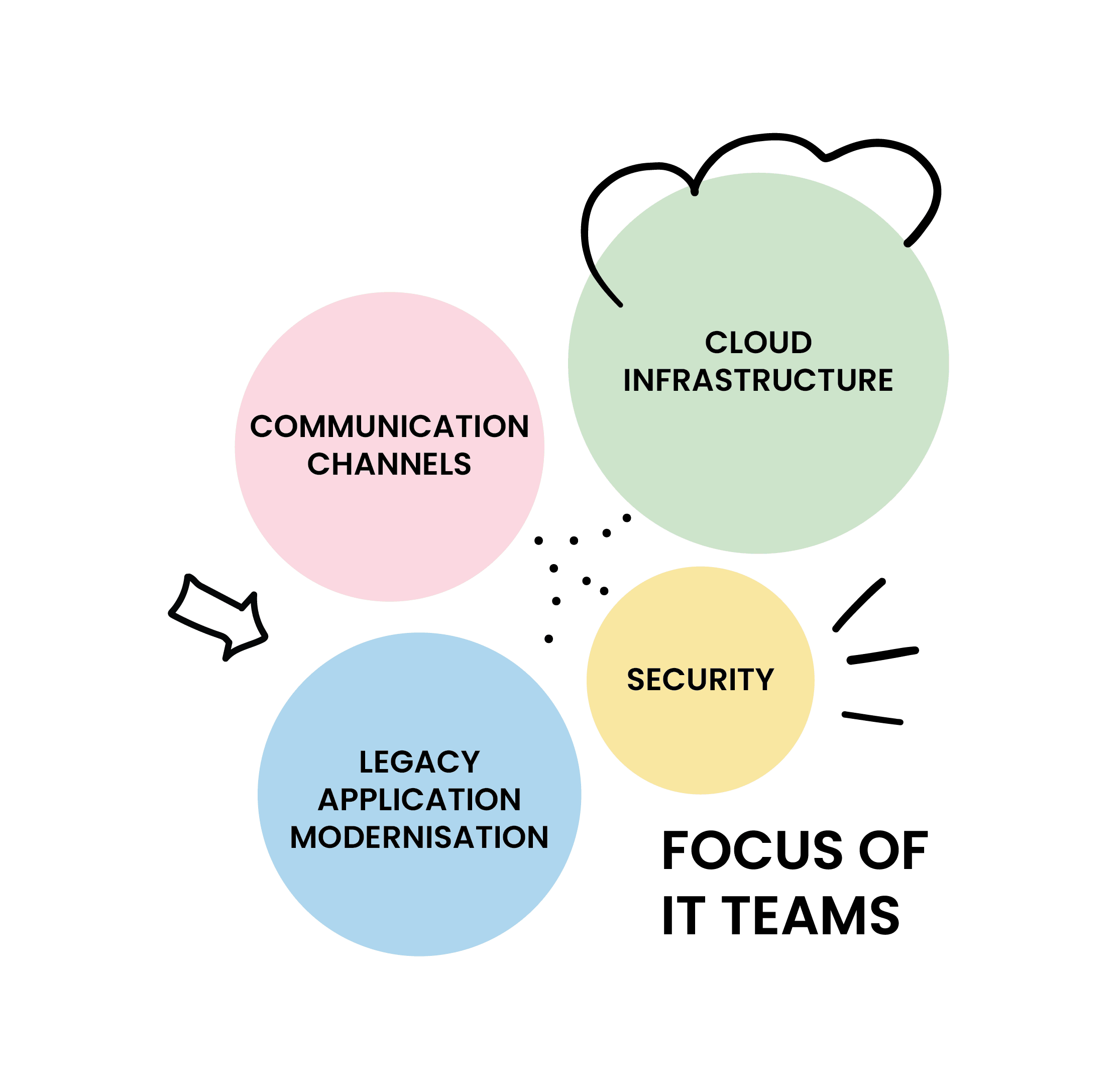
How Can IT Teams Prepare For Workplace Modernisation?
Before the pandemic, many organizations were just starting to modernize their workplaces. Tech startups, already accustomed to the digital age, had integrated advanced tools and processes, while older enterprises were exploring remote work, cloud technologies, and virtual meetings. By 2024, 94% of companies had adopted cloud computing. The COVID-19 pandemic accelerated this shift significantly. With a sudden move to remote work, IT teams had to rapidly deploy the necessary infrastructure. Some organizations used this as an opportunity for a complete overhaul, while others made only essential updates. The result is a workplace transformation that is now widespread, with many companies either in the midst of modernization or having completed the process.
What is a modern workplace?
Each definition might vary but broadly here are some features that define modern workplaces:
Use of digital technology for business processes
A wholesaler can use business applications like ERP tools to manage all their supply chain processes from within the tool.
Remote teams and ability to work from anywhere
At WorkingMouse, we have Atlassian’s Confluence as our online Wiki to update and manage internal as well customer project reports. Our teams can work from the office or home on any given day.
Online collaboration and communication
We use tools like Miro for online collaborations and team workshops and Zoom for all virtual meetings.
Modern work culture and employee experience
With the focus on learning and development, inclusion, and celebrating everybody’s successes, the Employee Experience team at WorkingMouse have been able to develop a culture that provides the team members a great environment at work.

In today’s digital economy, it is more important than ever to modernise the workplace. Here’s why:
Efficiency and productivity – With a good structure, the right tools, and well-defined processes, like cloud computing, the efficiency of the team can be improved. By using cloud computing the effiecny and productivity of employeess goes up . Imagine a procurement team member filling out paper-based forms to keep track of purchases and then entering them all onto excel sheets. And now imagine the same team member managing all the purchases and inventory through a central platform, accessible from anywhere. So many processes nowadays can be digitised to improve the efficiency and productivity of the team.
Skills and talent pool - Sometimes the location of your business can be a big reason for its inability to scale beyond a certain point. There could be multiple issues but one of the big challenges you might face is the availability of the talent pool. With a remote working infrastructure and tools, like cloud computing, you can hire the best talent across geographies without limitations.
Agility - With the use of technology tools, businesses today can become more agile to market changes. This agility is important both internally and externally. With a modern workplace, faster decision making, and implementation can be achieved thus allowing the businesses to adapt and lead the changes productively and cost-effectively.
Job satisfaction – Gone are the days when employees used to stay loyal to an organisation for 10 years or more. With a more connected world than ever, the importance of satisfaction at work is very important for employees to stay with any organisation. As of 2024, around 75% of Australians are looking for a new job. With modern tools and policies, organisations can create a culture that allows flexibility to employees and thus leading to higher satisfaction and retention.
For example, if employees are allowed to work from home for a couple of days a week, they can avoid travel time to work and spend more time with family. All they need is access to the resources, communication channels and trust from the organisation. This can easily be accomplished with the use of cloud computing.
A workforce that is talented, efficient, and satisfied is the key ingredient of the success recipe for any organisation. As these metrics improve, the performance of the team would go up leading to a healthier organisation.
While work is still very important for us after the pandemic there has been a shift in how we measure the value of work, health, and family in our lives. Having a modern workplace also leads to greater adaptability for organisations to the changing landscape of how our perceptions have changed towards work and retaining the talent.

Role of the IT teams in modernising workplaces
Modernising the workplace is an ongoing process. These are some of the key major components of a modern workplace that the IT team must focus on:
Cloud infrastructure
Setting up a virtual organisation where all the resources, tools, and documents are accessible remotely is the first major step. The IT teams need to plan the cloud infrastructure they would need to make this possible. Also selecting and implementing the right cloud-based SAAS tools is equally important. For example, when WorkingMouse decided to go remote during 2020, we set up Microsoft SharePoint for storage and sharing our files, Atlassian’s Confluence for documentation and reports and Ganttic for managing team utilisation.
Communication channels
Whether it’s remote desktop access to the employees, online communication, virtual meetings, or collaboration, it is of utmost importance that the right communication channels are set up. This allows the employees to work as a team even while not being physically present in the same location. For our brainstorming sessions at WorkingMouse, we earlier used to have whiteboards and sticky notes which were replaced by online collaborations tools like Miro and Menti. Enterprise-level Zoom was also set up for all our meetings.
Legacy application modernisation
If your organisation is currently using legacy business software that has not been modernised in the last 10-15 years, it would soon become a liability than an asset (if it hasn’t already). The tools that needed to be downloaded on a desktop will have remote accessibility concerns and applications built on older technologies, like Visual Basic, are harder to maintain and enhance. Legacy application modernisation is critical to allow the applications to be hosted on the cloud, adopt newer technologies, and improve functionality through adapting to changes in the business processes.
Security
Setting up a secure digital environment is critical for the success of a modern workplace. With the rise in the use of digital platforms, enterprise security vulnerabilities have also gone up and hence it is important to establish the right tools and processes to mitigate these risks. For example, our technology team has upgraded the infrastructure and set up strict policies to ensure security of the applications and data. We also use a secure VPN tunnel for all our remote desktop access.

Apart from just using the modern tools and applications, other initiatives within the organisation are also important for implementing the changes. Some of these would be:
- Leadership buy-in
- Employee training
- Change management
These initiatives are often undertaken with the IT and HR teams working together.
If you are looking to remodel your workplace and need a team with vast experience in legacy software modernisation to look at your business applications, you can contact us.




.png)











